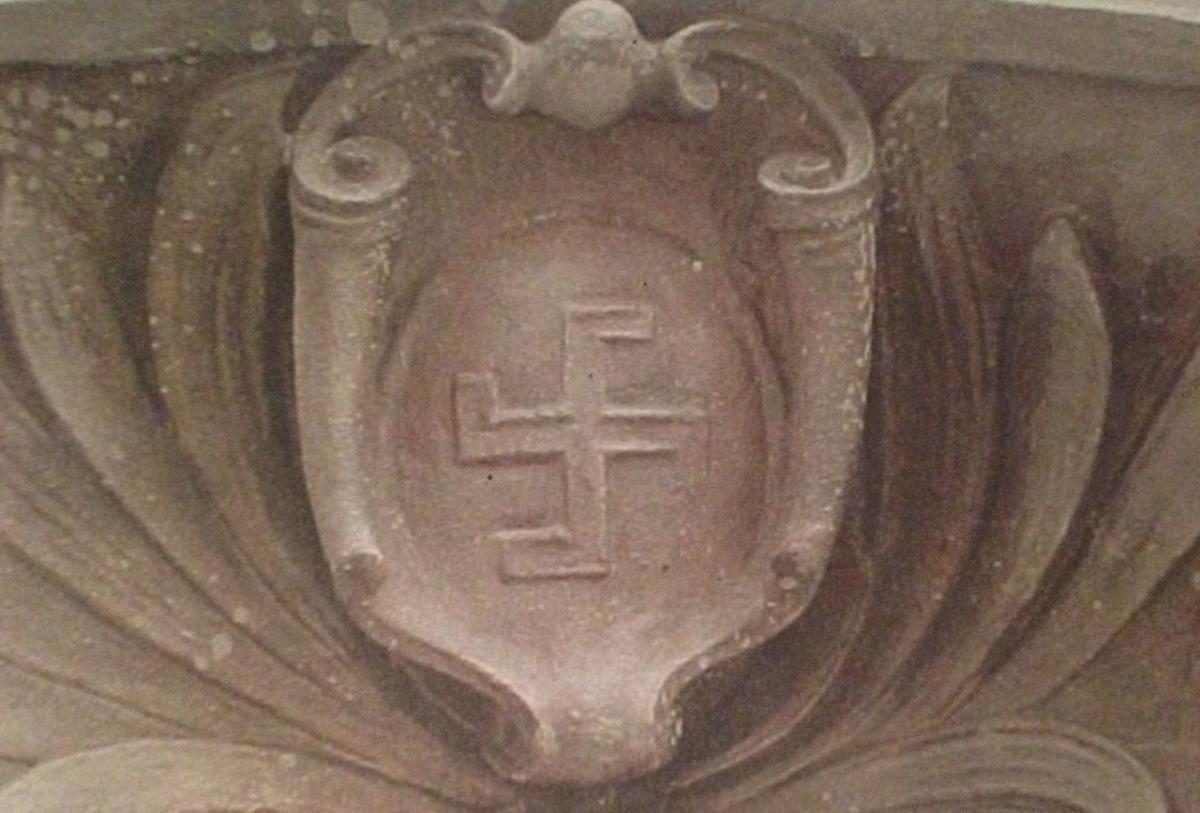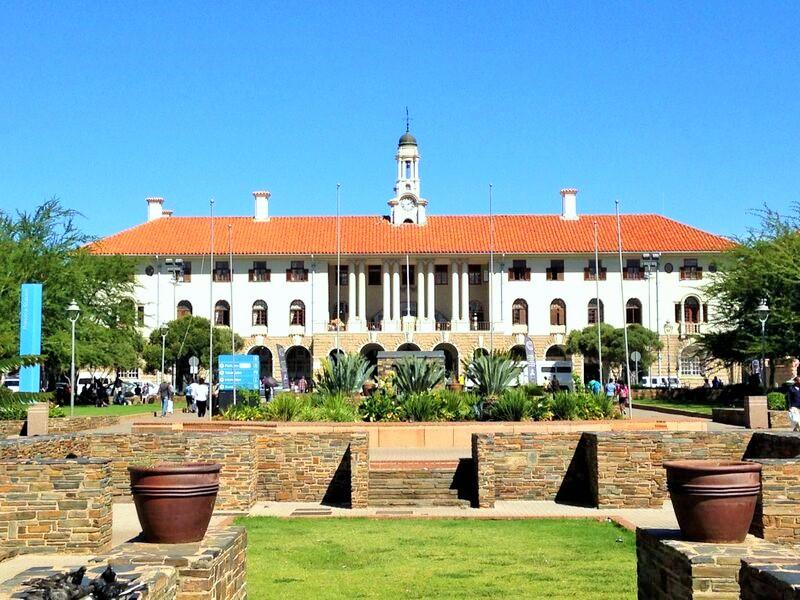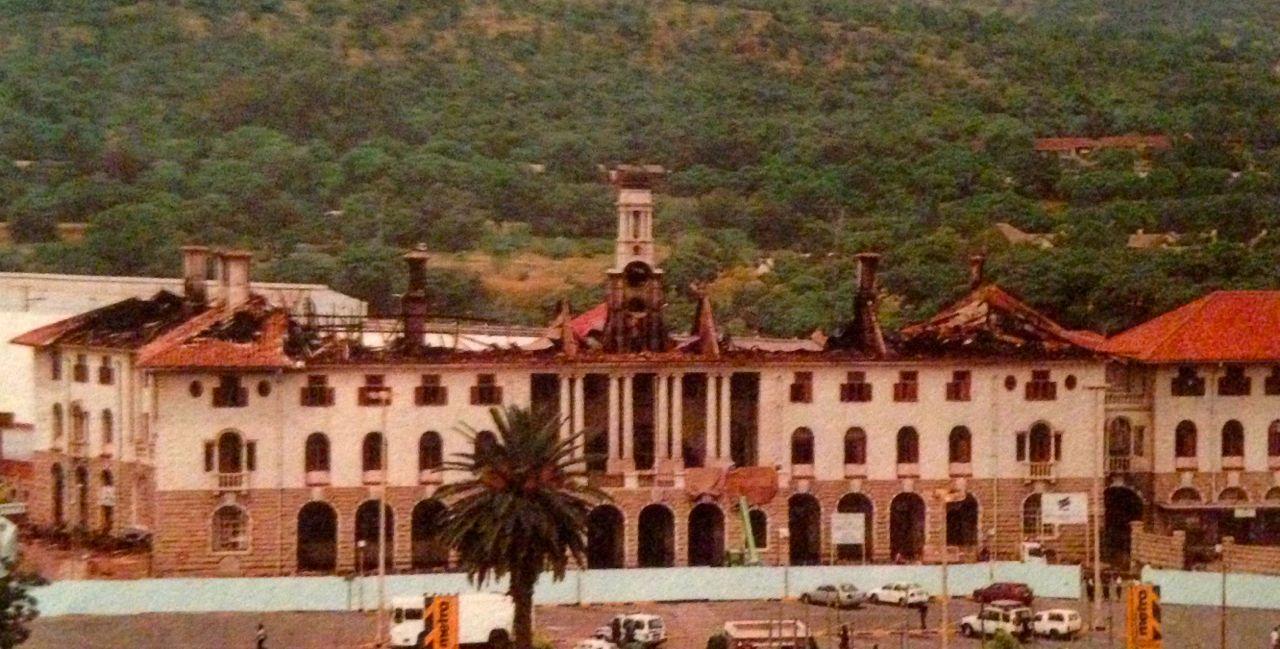
Disclaimer: Any views expressed by individuals and organisations are their own and do not in any way represent the views of The Heritage Portal. If you find any mistakes or historical inaccuracies, please contact the editor.
In the early 2000s Intersite Property Management Services published the newspaper 'Pretoria Station Update'. The purpose of the paper was to publicise plans for the precinct and to track the restoration project which followed the tragic 2001 fire. The December 2001 issue carried a fascinating story unpacking the mystery and debate of a swastika found on the famous clock tower.
One of the most distinctive features of the Pretoria Station is its elegant clock tower, the first thing anyone notices as they drive south along Paul Kruger Street in central Pretoria. However, when restoration work began on the station a few months ago, few realised that this relatively small feature held a lot more interest than the rest of the building put together!
Pretoria Station (Heritage Portal)
The destruction of the roof by fire on 19 February allowed workers to properly reach the clock tower for the first time since construction in 1910 - one of the many opportunities arising from the disaster. Up till now, the roof structure and tiles have prevented the building of scaffolding around the tower, making cleaning and maintenance almost impossible.
Burned-out shell of the Pretoria Station (Pretoria Station Update - Intersite Property Management Services)
In September this year, restoration workers erected scaffolding around the tower. They began by sanding, preparing and painting the walls of the tower and for the first time in 90 years, cleaned and polished the proud copper cupola. It was during this phase that an unusual discovery was made - the image of a swastika embossed on the surround above the clock face.
Debate around the Swastika
This discovery of course opened up a lot of debate from various experts around the origin and reasoning behind the unusual design. The first thing post World War Two society thinks of when confronted with a swastika is the Nazi regime. However, the Station was built in 1910, leading all experts to agree that this was not a probable link.
According to a media statement from Claud Malan, director of the De Merindol Collectors Gallery and an expert on South African history, the swastika was chosen as the symbol for the unification celebrations when South Africa became a union in 1910. According to Malan, the four arms represented the four colonies and the symbol - although in an ornate form - was used as the official committee badge.
Thus, since the Station was built the same year, it is logical that the symbol was in recognition of these celebrations.
However, other experts on the architecture of Herbert Baker buildings disagree with this opinion. William Martinson, who has worked as an independent researcher for the National Monuments Council, believes that the swastika emblem was a direct result of Sir Herbert Baker’s fascination with symbology - apparently the architect used symbols more frequently in his writings than on his famous buildings.
Another view is held by Anton Jansen, chairman of the Simon van der Stel Foundation Pretoria and the man who initially discovered the symbol. Sir Herbert Baker was known for making impromptu changes if money was lacking or time short. One of his favourite tableaux - that of a man, woman, elderly woman and child, which can be seen at the Union Buildings was most probably intended for use on the station tower. However due to lack of time of funds, the swastika was used in its place.
Through the ages, the swastika has been used, in one form or another, as an ornamental element. Early examples can be seen in the Bronze Age in Europe and from the 3rd millennium BC in Asia.
The word swastika is Sanskrit in origin and has been used in the art of [Native Americans] and the Polynesians. Strangely enough it has enjoyed little support in Australia, Africa and South America.
The swastika is believed to symbolise the sun or fire, while early Viking legends used it to depict the hammer of the god Thor. It was only during the Second World War that it took its more sinister connotations.
Thank you to Lucille Davie for giving us access to the resources she collected while writing stories for the City of Joburg website.
Comments will load below. If for any reason none appear click here for some troubleshooting tips. If you would like to post a comment and need instructions click here.


